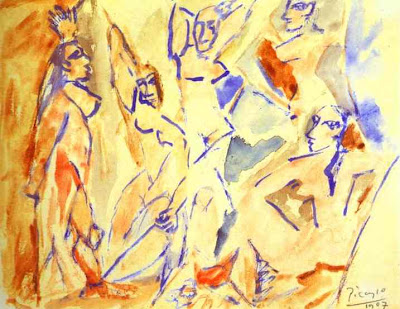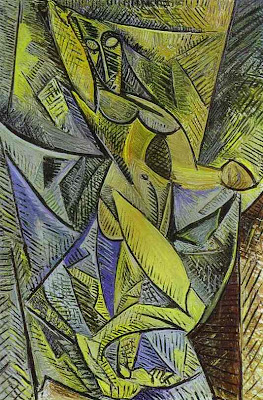Rembrandt at Artprice. To look at auction records, find Rembramdt's works in upcoming auctions, check price levels and indexes for his works, read his biography and view his signature, access the Artprice database.
Rembrandt Harmenszoon van Rijn was born on 15th July, 1606, in Leiden, the eighth of nine children of Harmen Gerritszoon van Rijn and his wife, Neeltje van Suijttbroeck. He was the first and the only of their sons whom they sent to the school for Latin. After seven years’ schooling (1613-1620), Rembrandt entered the Philosophical Faculty of Leiden University to study Classics. A short period at the university finished with starting a period of apprenticeship (1622-24) under the Italy-trained painter Jacob Isaacszoon van Swanenburgh. However, the succeeding half-year studies under Pieter Lastman, the Amsterdam artist of historical paintings, influenced Rembrandt’s work much deeper.
In 1625 the 19-year-old Rembrandt returned to Leiden and opened his own studio, which he shared with his friend of the same age, Jan Lievens. Rembrandt executed historical paintings, initially following Lastman’s models: Tobit and Anna (1626), The Ass of Balaam Talking before the Angel. (1626). His physiognomic studies, resulted in numerous self-portraits: Self-Portrait. (c. 1629), Self-Portrait with Wide-Open Eyes. (1630). During his lifetime Rembrandt executed more than 100 self-portraits. He also produced many engravings and etchings.
The turning point in Rembrandt’s further career was the visit to Leiden of Constantijn Huygens, the widely educated secretary of the governor Prince Frederick Hendrick, who developed great interest in Rembrandt and his art. Huygens’ patronage led to commissions and initial success: two works by Rembrandt were purchased by the English Crown and many copies of his painting Judas Returning the Thirty Pieces of Silver and the Raising of Lazarus were soon published.
After his father’s death on 27th April 1630, Rembrandt moved to Amsterdam, where he settled in the house of the art-dealer, Hendrick van Uylenburgh. Prince Frederick Hendrick bought a number of his paintings and commissioned the Passion cycle, which he would finish in 1639. In 1632, Rembrandt also received the commission to paint a portrait of Dr. Nicolaes Tulp, the famous Amsterdam surgeon. Wining acclaim with this work, Rembrandt became a fashionable portraitist in Amsterdam and started to receive many commissions for portraits of well-to-do patricians. One of his favorite themes, the meditating Philosopher, appeared in his work as early as about 1633. The Prophet Jeremiah Mourning over the Destruction of Jerusalem. (1630): Rembrandt has used the blunt end of his brush to scratch details of the foliage, Jeremiah’s beard and the fastenings of his tunic in the wet paint, a characteristic technique of his early years.
In 1634, Rembrandt became a member of the Guild of St. Luke, in order that he may train pupils and apprentices as a self-employed master. Rembrandt was popular as a teacher and had a very large and profitable workshop with many student followers, including such outstanding painters as Gerard Dou, Aert de Gelder, Carel Fabritius, Philips Konink, Ferdinand Bol, Govert Flinck and Nicolaes Maes.
The same year he married Saskia van Uylenburgh, niece of his art-dealer and daughter of a wealthy patrician. Despite their deep devotion and love to each other, their happiness was overshadowed with the deaths of their new-born children and quarrels with Saskia’s relatives, who accused her of squandering money. Of their 4 children only their son Titus, born in September 1641, survived to his adulthood. Titus’ features appear in a number of painting by Rembrandt: The Artist's Son Titus at His Desk. (1655), Titus. (c.1658).
As if in plea to let her son live, Saskia died the next year in June. Her death caused a deep crisis in Rembrandt’s life.
During the years of their mutual life Rembrandt created such masterpieces as The Abduction of Ganymede. (1635), The Angel Stopping Abraham from Sacrificing Isaac to God. (1635), The Feast of Belshazzar. (c. 1635), The Blinding of Samson. (1636), Danae. (1636), The Prodigal Son in the Tavern (Rembrandt and Saskia). (c. 1635), The Night Watch (1642) and others. The Night Watch, maybe is the most famous Rembrandt’s work, and his the largest one (12x15ft; 3.5x4.5m), was commissioned by a company of the Civil Guard of Amsterdam for its assembly hall. The painting is a “recapitulation of the ideals of Rembrandt’s first ten Amsterdam years, and is the last painting in which he strives for brilliant external effects. From now on he set himself the aim of recreating in visual terms the intangible essence of man, his inner life”. In his last two decades Rembrandt simplified his compositions, preferring more classical and stable structure.
To help the widowed father, two women, Geertge Dircx and, a little later, Hendrickje Stoffels, were admitted in the household. Eventually Geertge caused the artist troubles: at first she repeatedly quarreled with him until at last she brought him to the court (in 1649) on the grounds of an unfulfilled promise of marriage. The second woman, Hendrickje, testified against the plaintiff, and Geertge was sentenced to several years in the prison at Gouda. Hendrickje became Rembrandt’s common-law wife, she sat for many of Rembrandt’s paintings, such as Portrait of Hendrickje Stoffels. (c. 1650) and in 1654 gave birth to their daughter Cornelia.
Despite numerous commissions, the fees from pupils and the proceeds from etchings, Rembrandt’s debts continued to grow. In 1656, Rembrandt was declared bankrupt. His house and collections were auctioned; however, the sum thereby raised was insufficient to cover the debts. The artist moved into the Roozengracht, where he led a secluded life along with Mennonite and Jewish friends. Titus’ guardian, Louys Crayers, after a long court case, succeeded in having the boy’s part of the inheritance returned to him from his bankrupt father’s estate.
After Rembrandt’s bankruptcy, Hendrickje and Titus (in 1660) set up an art-dealing business in order to provide Rembrandt with protection against his creditors. Despite leading a secluded existence, he maintained many contacts. He continued to keep pupils, and execute commissions, such as the portrait of the board members of the Amsterdam Cloth makers’ Guild The Syndics of the Clothmakers' Guild (The Staalmeesters). (1662); painting of Alexander the Great and a portrait of Homer. (1663). He trained Titus as a painter but hardly any trace of his artistic activities survived. After Hendrichje’s death in 1663 Titus continued the art-dealing business. The paintings of Rembrandt’s last years bear the sad imprint of his unhappy old age and disrepute The Return of the Prodigal Son. (c 1668/69). The dramatic expressions in his last magnificent series of self-portraits reveal an overwhelming ultimate misery and inner torment Self-Portrait. (1669).
In 1668, Titus married Magdalena van Loo, but unexpectedly died half a year later. One year, which remained for him to live, Rembrandt spent at the house of his daughter-in-law. He became godfather to his granddaughter on 22nd March, 1669. The artist died on 4th October, 1669 without having completed the painting Simeon with the Christ Child in the Temple.







 Pablo Picasso was born on October 25, 1881, in Málaga, Spain. The son of an academic painter, José Ruiz Blanco, he began to draw at an early age. In 1895, the family moved to Barcelona, and Picasso studied there at La Lonja, the academy of fine arts. His visit to Horta de Ebro from 1898 to 1899 and his association with the group at the café Els Quatre Gats about 1899 were crucial to his early artistic development. In 1900, Picasso's first exhibition took place in Barcelona, and that fall he went to Paris for the first of several stays during the early years of the century. Picasso settled in Paris in April 1904, and soon his circle of friends included Guillaume Apollinaire, Max Jacob, Gertrude and Leo Stein, as well as two dealers, Ambroise Vollard and Berthe Weill. His style developed from the Blue Period (1901- 04) to the Rose Period (1905) to the pivotal work Les Demoiselles d'Avignon (1907), and the subsequent evolution of Cubism [more] from an Analytic phase (ca. 1908–11), through its Synthetic phase (beginning in 1912–13). Picasso’s collaboration on ballet and theatrical productions began in 1916. Soon thereafter, his work was characterized by neoclassicism and a renewed interest in drawing and figural representation. In the 1920s, the artist and his wife, Olga (whom he had married in 1918), continued to live in Paris, to travel frequently, and to spend their summers at the beach. From 1925 into the 1930s, Picasso was involved to a certain degree with the Surrealists, and from the fall of 1931 he was especially interested in making sculpture. In 1932, with large exhibitions at the Galeries Georges Petit, Paris, and the Kunsthaus Zürich, and the publication of the first volume of Christian Zervos's catalogue raisonné, Picasso's fame increased markedly.
Pablo Picasso was born on October 25, 1881, in Málaga, Spain. The son of an academic painter, José Ruiz Blanco, he began to draw at an early age. In 1895, the family moved to Barcelona, and Picasso studied there at La Lonja, the academy of fine arts. His visit to Horta de Ebro from 1898 to 1899 and his association with the group at the café Els Quatre Gats about 1899 were crucial to his early artistic development. In 1900, Picasso's first exhibition took place in Barcelona, and that fall he went to Paris for the first of several stays during the early years of the century. Picasso settled in Paris in April 1904, and soon his circle of friends included Guillaume Apollinaire, Max Jacob, Gertrude and Leo Stein, as well as two dealers, Ambroise Vollard and Berthe Weill. His style developed from the Blue Period (1901- 04) to the Rose Period (1905) to the pivotal work Les Demoiselles d'Avignon (1907), and the subsequent evolution of Cubism [more] from an Analytic phase (ca. 1908–11), through its Synthetic phase (beginning in 1912–13). Picasso’s collaboration on ballet and theatrical productions began in 1916. Soon thereafter, his work was characterized by neoclassicism and a renewed interest in drawing and figural representation. In the 1920s, the artist and his wife, Olga (whom he had married in 1918), continued to live in Paris, to travel frequently, and to spend their summers at the beach. From 1925 into the 1930s, Picasso was involved to a certain degree with the Surrealists, and from the fall of 1931 he was especially interested in making sculpture. In 1932, with large exhibitions at the Galeries Georges Petit, Paris, and the Kunsthaus Zürich, and the publication of the first volume of Christian Zervos's catalogue raisonné, Picasso's fame increased markedly.





 Cartoonist Shivram Dattatreya
Cartoonist Shivram Dattatreya 


